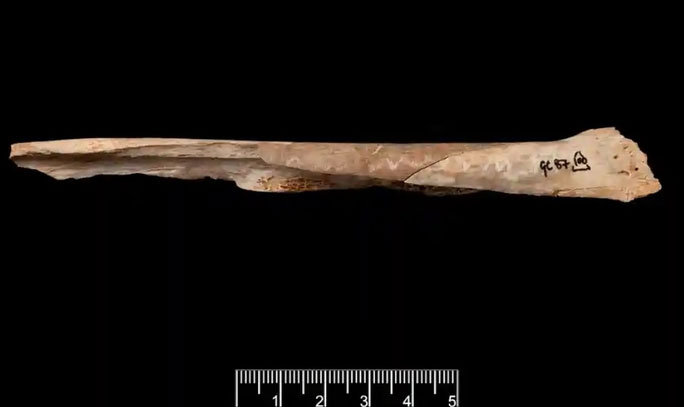Ancient DNA Analysis Yields Surprising Results: The British Have At Least Two Distinct Genetic Ancestries at the End of the Last Ice Age.
According to The Guardian, the results of DNA analysis of ancient Britons reveal that England was home to at least two genetically distinct groups with differing diets and cultures at the end of the last Ice Age.
About 19,000 years ago, the glaciers covering much of England melted, becoming habitable for humans. Evidence of human life dates back to around 15,500 years ago. These ancient groups crossed the waters to reach the land that once connected England to mainland Europe.
Remains from the End of the Ice Age have only been found at a few sites in England, including Gough’s Cave in Somerset and Kendrick’s Cave in Llandudno, Wales. The former is famously known as the home of “Cheddar Man,” an ancient Briton who lived around 10,000 years ago, as well as ancient artifacts indicating cannibalism.

Skull of an ancient woman from Gough’s Cave, living about 14,900 years ago. (Photo: Natural History Museum)
In the journal Nature Ecology & Evolution, Dr. Sophy Charlton, the lead author from the University of York (Canada), describes how they conducted isotope analysis on the remains, eliminating variables from different food sources and dating using carbon isotopes.
The research team discovered that the diet of the individual from Gough’s Cave primarily relied on terrestrial animals, such as horses, while the diet of the individual from Kendrick’s Cave included marine organisms.
Subsequently, the researchers analyzed the nuclear and mitochondrial DNA of the two individuals. The results indicated that the individual from Gough’s Cave was a woman who lived about 14,900 years ago and was cannibalized by her peers. This individual shares ancestry with a specimen found in a cave in Belgium, known as Goyet Q2, who lived around 15,000 years ago.
This ancestry, linked to groups expanding from Southwestern Europe, is associated with stone tools, mortuary practices, cave art, and other practices considered part of the Magdalenian culture.
However, although Kendrick’s Cave contains Magdalenian-style stone tools and a cut vertebra from the same period as the woman from Gough’s Cave, the individual from Kendrick’s Cave shows a different ancestry.
This individual was male, living about 13,500 years ago, and shares ancestry with 14,000-year-old remains found in Villabruna, Northern Italy. These were hunter-gatherers from the west who migrated from Southeast Europe or the Near East.

A bone from an ancient individual in Gough’s Cave. (Photo: Natural History Museum)
However, Dr. Rhiannon Stevens, a co-author of the study from University College London (UK), noted that this research only examined two individuals, meaning caution is needed when drawing broader conclusions. For instance, she mentioned that Magdalenian people in other parts of Europe consumed fish.
Professor Paul Pettitt, from the University of Durham, stated that while the results of this study are not new, they highlight the effectiveness of ancient DNA analysis. The research helps address the question of whether sudden changes in prehistoric culture were due to migration and population breaks or the ideas of individuals.


















































